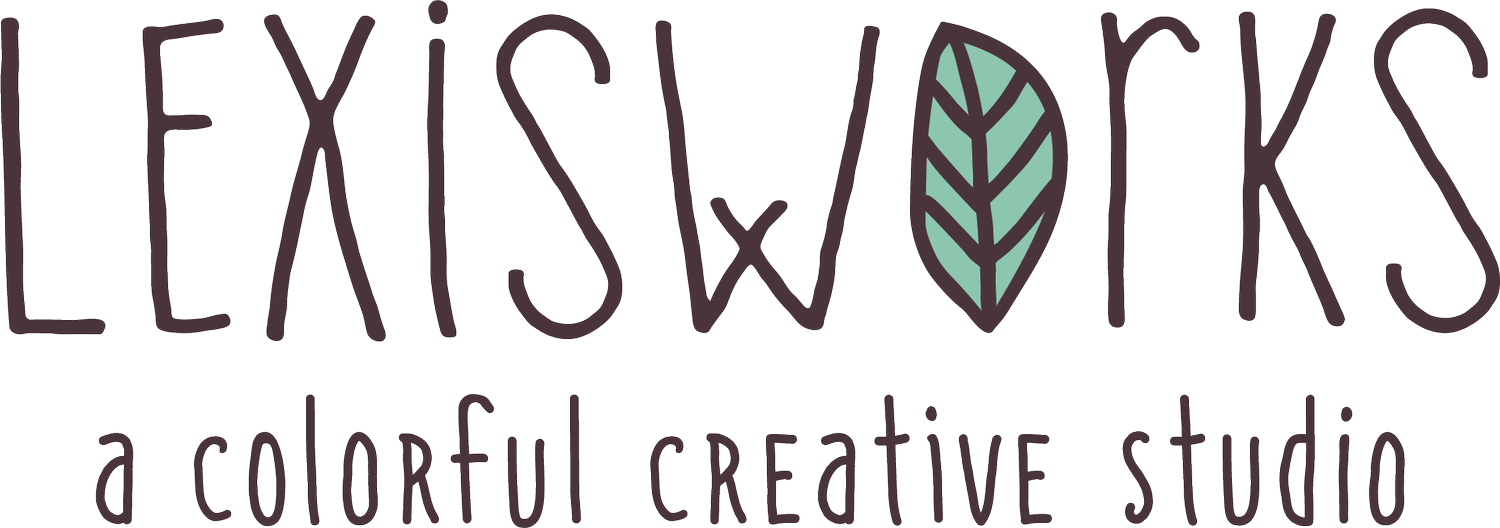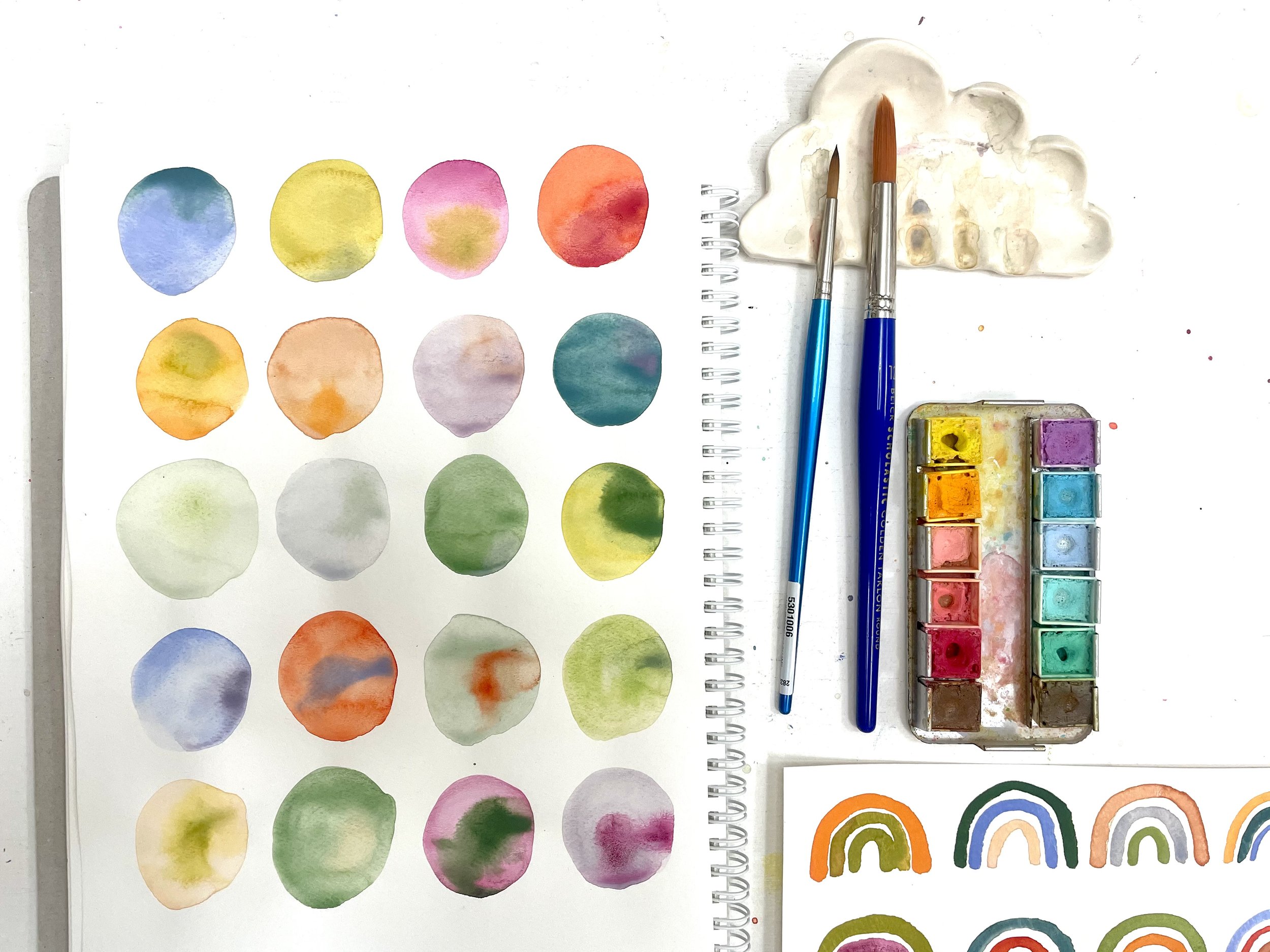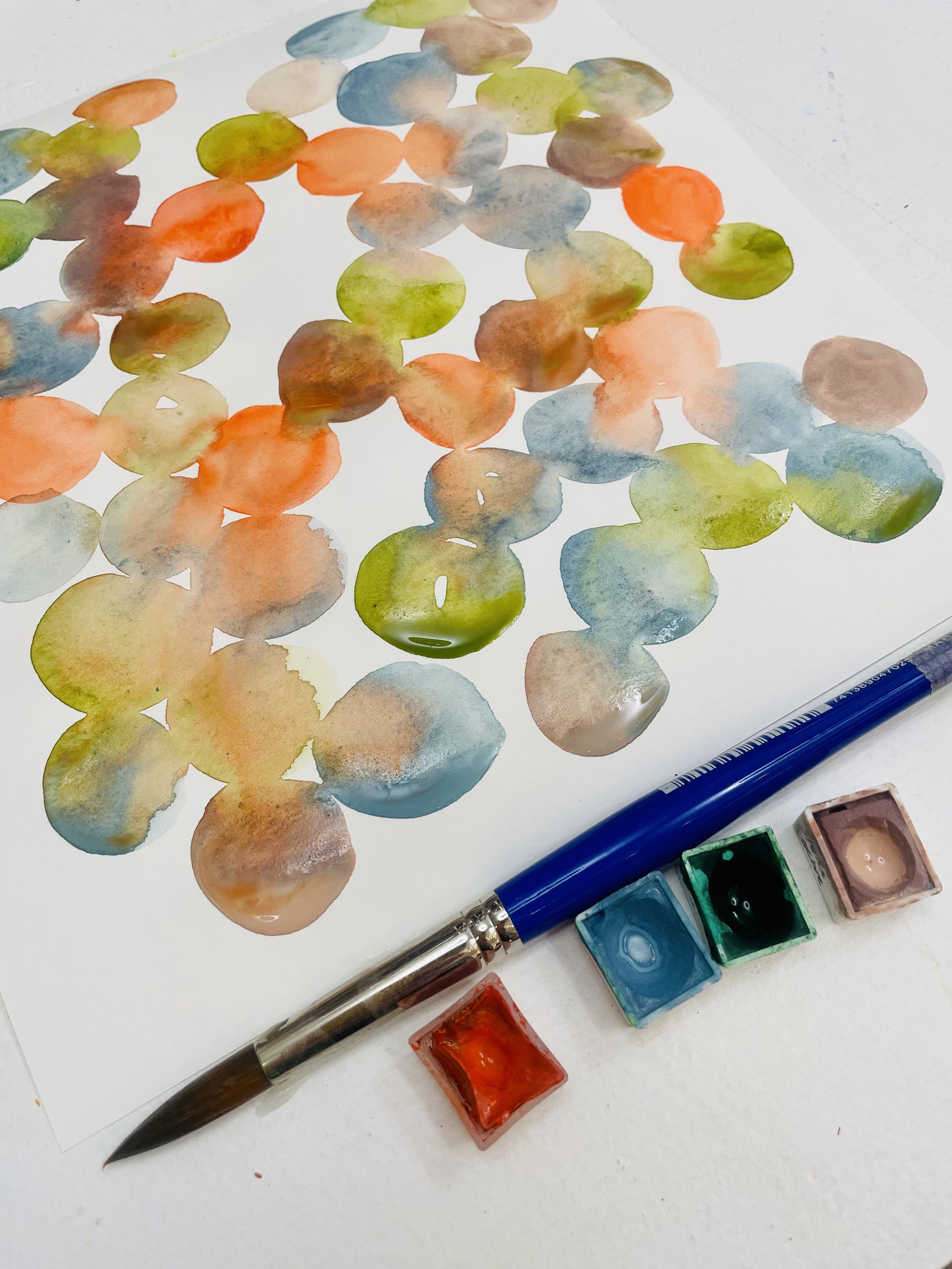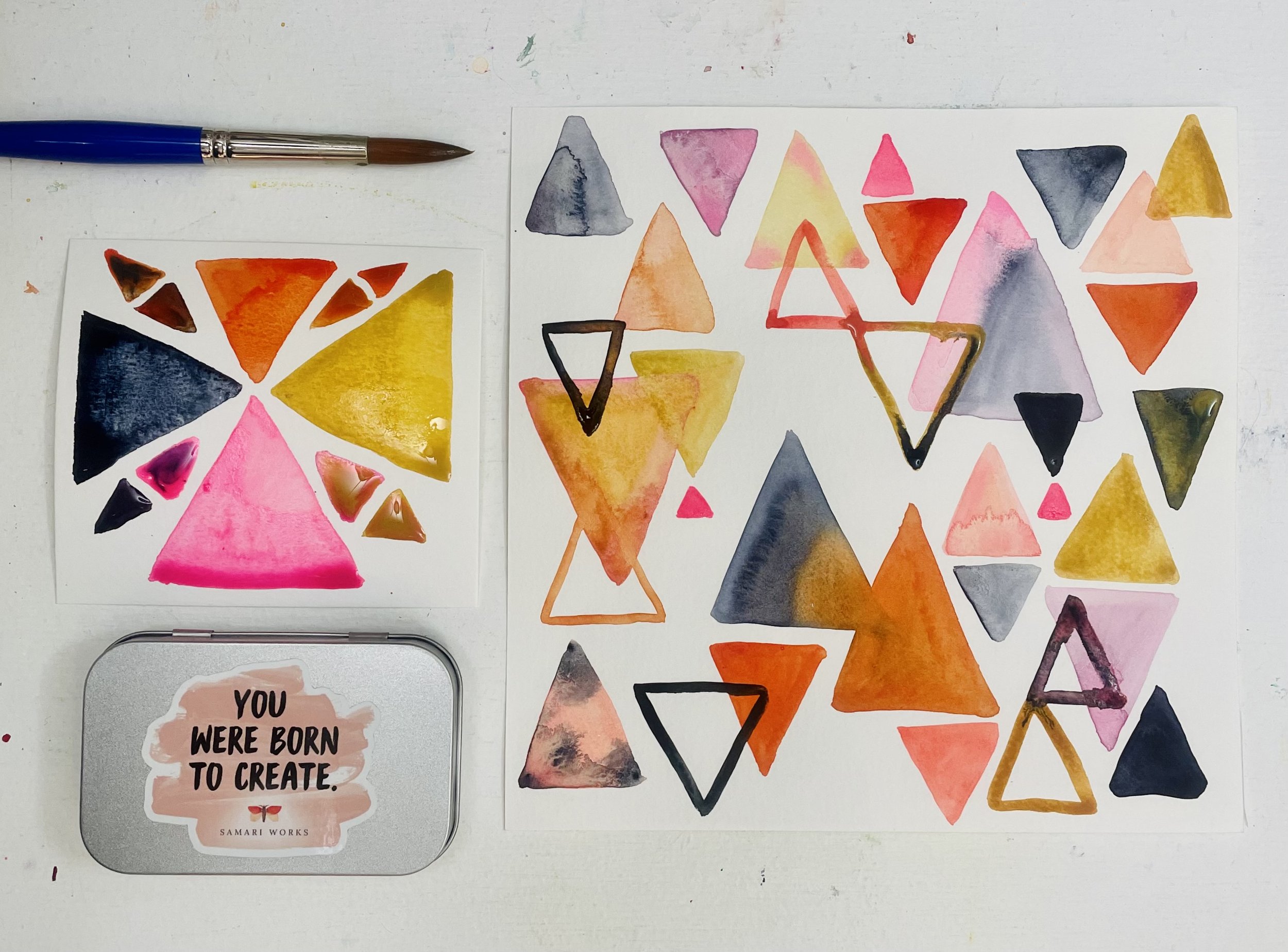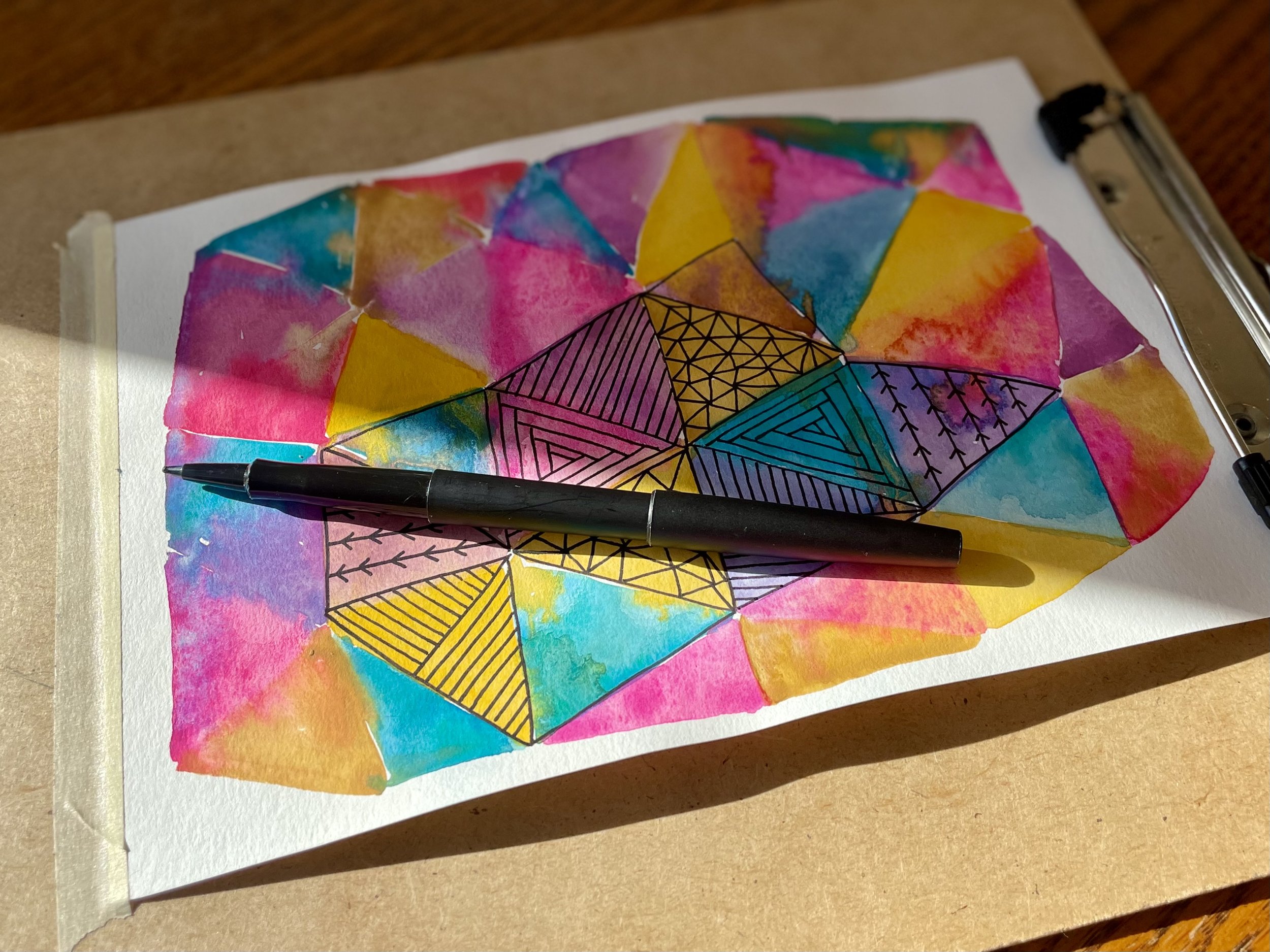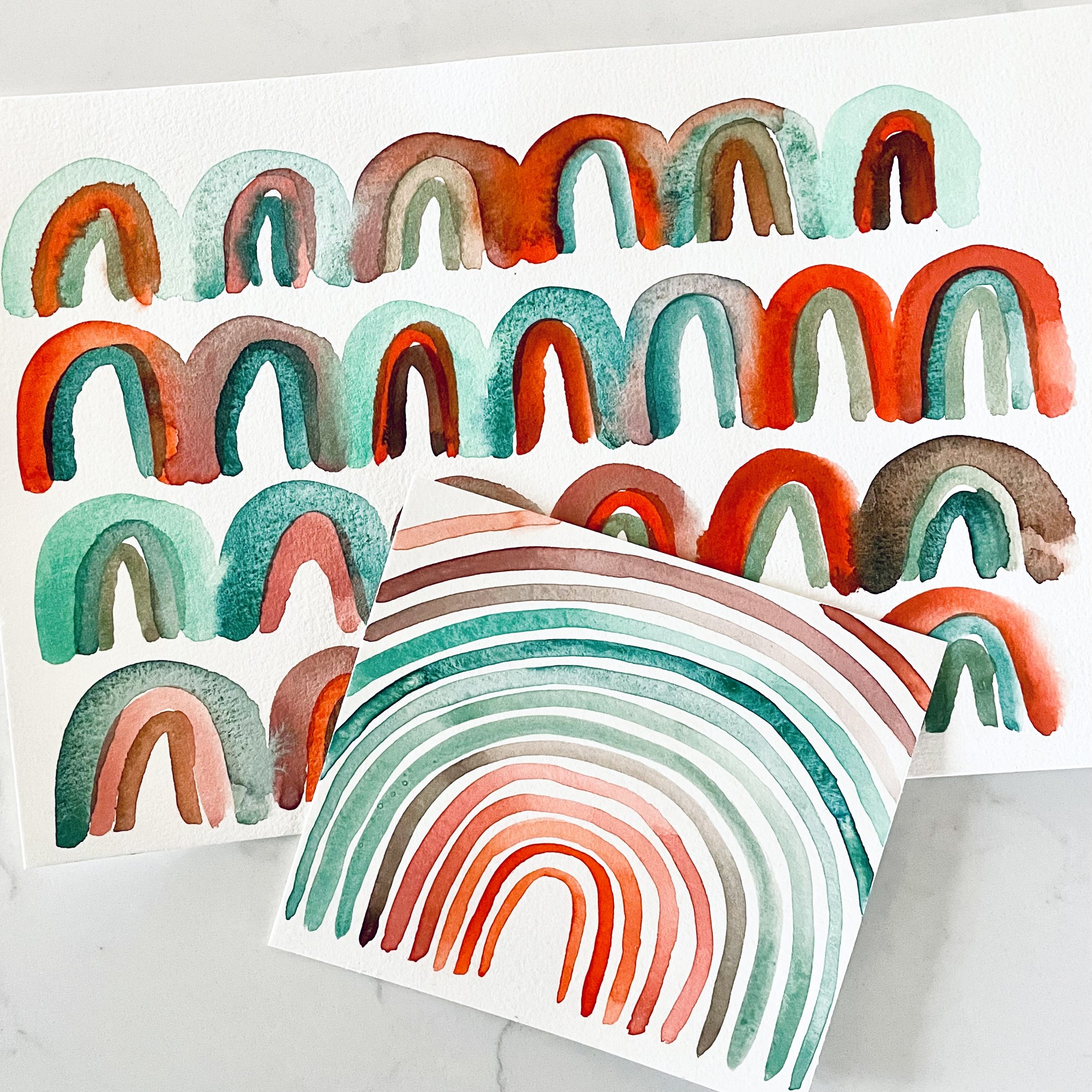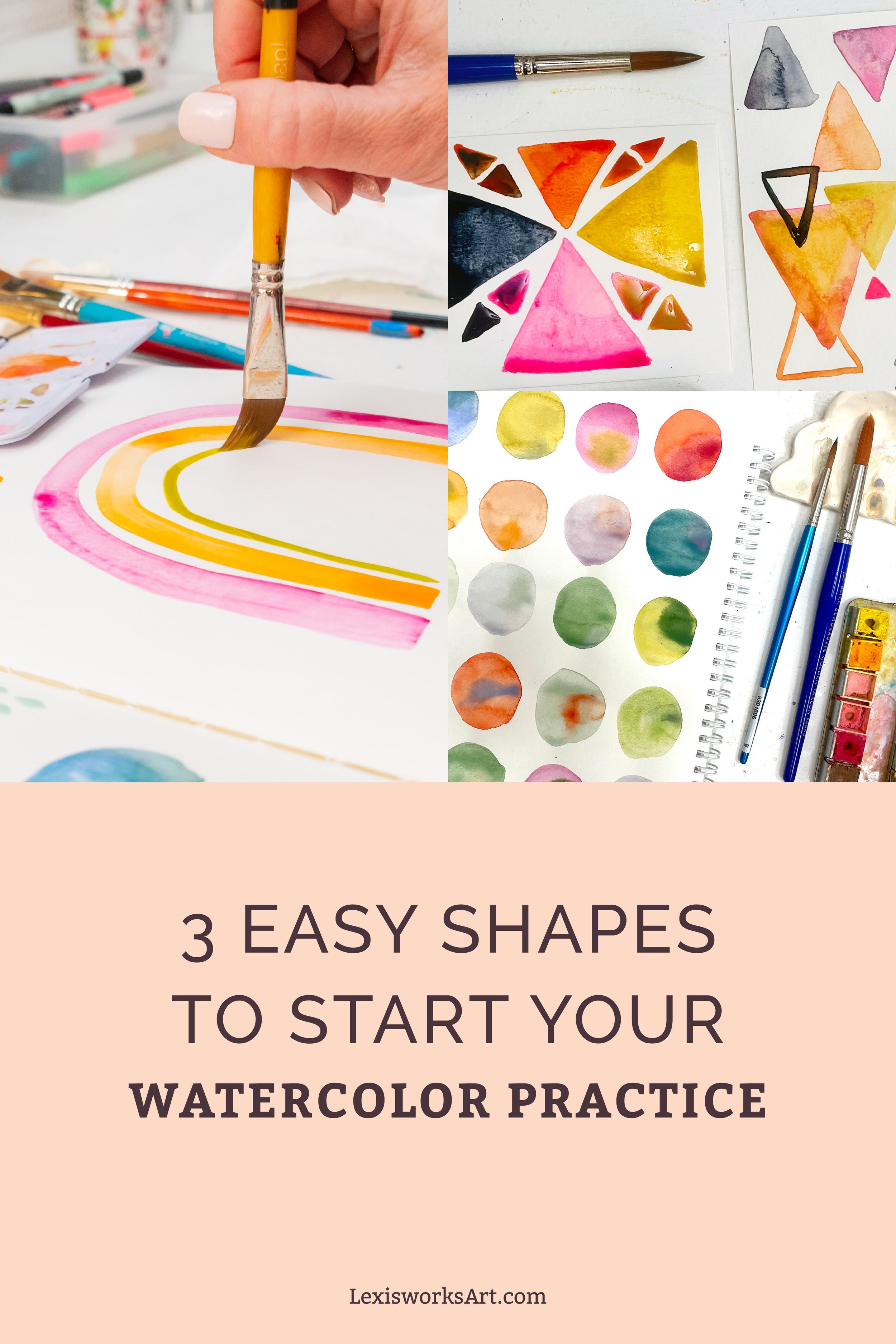3 Watercolor Shapes for Stunning Results
Simple watercolor shapes for stunning, colorful results
I get it, you know that creating can feel good + help you feel more grounded, calm + present. BUT, when you sit down to paint, the blank paper stares up at you + you freeze, unsure of what to paint.
Frustrating, right?
What you need is a reliable formula for starting so that you can push past the creative block + create paintings that feel joyful.
Imagine having a go-to set of shapes to paint that will make filling a page with colorful watercolor paint easy + encourage you to keep engaging with your watercolor painting practice. Something that will allow you to explore + experiment with the magical medium of watercolor so that you can ACTUALLY experience the joy + mindfulness creating has to offer.
It is possible.
I’m going to show you the exact shapes I use in my own practice that will not only get you painting but keep your painting practice moving forward while experiencing color + joy in the small moments.
👉🏻 Plus, I’ll share a tip at the end to make a disappointing painting shine.
First, limit your choices to focus on creating
My watercolor practice is less about the technique + subject matter, more about stirring creative energy, loosening up + letting go of expectations. I just want to play!
Setting limitations is the best way to set the scene for play. Limitations naturally narrow choices so you can focus on creating, rather than becoming overwhelmed by choice.
By limiting your composition to ONE shape, you automatically harmonize your composition. You’ve already set yourself up for success + given your brain one less thing to think about.
Supplies to Start
You don’t need much to get started with these simple shapes.
Round brush(s)
Any round brush will work, my go-to choice is a 6. Experiment with different sizes.
Favorite watercolor paints
Check out my favorite handmade watercolor paints for inspiration.
Several sheets of watercolor paper
Don’t worry about expensive paper, experiment with regular watercolor paper + non traditional papers—just don’t use a glossy paper.
Water
An old jar works perfectly + I always recommend using more water when you paint than you think is safe. That’s where the magic happens!
Simple Shape to Paint #1:
Circles
The circle is the perfect simple shape to begin your watercolor painting practice. In fact, it is the first layer of many of my own paintings. It’s curved shape + organic nature lends itself to a fluid, playful composition.
TRY IT: Start by painting the circle shape, then using circulatory brush strokes, fill the shape in with watercolor paint.
Compositions to try:
Scatter the circles across the paper or paint in a grid.
Overlapping circles gives you an opportunity to see how your watercolor paint colors interact when you conjoin circles.
Don’t forget to try including outlines, or unfilled circle shapes, in your composition for contrast.
Embrace the quirkiness of your circles!
Feel free to create circles that are as perfect or as wonderfully irregular as you please! 🟡🔵 If you're just starting out, your circles might lean towards the more playful + quirky side. Guess what? That's totally fine! 🎨✨
You’ll develop muscle memory the more you paint this simple shape. So don’t be too hard on yourself if your circle is not mathematically correct. That’s the beauty of creating with your hands. Just let your creativity flow + enjoy the unique charm your imperfect circles bring to your artwork! 😉🌀
Start your watercolor practice with circles
Learn why painting circles
is a playful way to learn about watercolor painting.
Simple Shape to Paint #2: Triangles
Another geometric shape to try is the triangle. This 3-sided shape offers an opportunity to focus on straight lines + angles. Remember, there are several kinds of triangles, so experiment with a variety of shapes + see what different compositions you can create.
TRY IT: Just like with the circle, paint the edges of your triangle first. Then use a wash brushstroke to fill in the shape.
Compositions to try:
Scatter triangles across the paper, allowing their edges to create an interlocking design
Paint rows of triangles with the same baseline.
Fill the paper with triangles that touch on all sides + see how your watercolor paint colors interact when your edges touch.
Consider including outlines, or unfilled triangles shapes, as part of your compostion.
Embrace imperfection + whimsy
When painting triangles, feel free to finesse their points with the tip of your brush. But, remember, it's all about embracing imperfection + whimsy. So don't stress over creating perfectly pointed triangles, especially if they are all interconnected. Just enjoy the creative journey + let your unique style shine through!
Simple Shape to Paint #3:
Rainbows
This fun shape is a childhood favorite that we forget about as we grow up. But don’t be surprised if you find rainbows more challenging to paint than you expected. You’ll develop muscle memory the more you practice the familiar arch. So keep playing with these whimsical shapes + have fun trying out different color combinations.
TRY IT: Create your rainbow by painting up, over toward the right + down, completing your arch. Nest your arches to create a colorful rainbow.
Compositions to try:
Paint rows of rainbows with the same baseline.
Fill the paper with a large arch, nesting smaller arches underneath to create a giant rainbow. You can even create different colors by dipping your dirty brush into another color, this creates a gradient or ombre effect as you move through the different bands of color.
Experiment with whether or not your bands of color touch or have white space in between.
Try using a flat brush for a different effect.
Embrace the joy
As you paint rainbows, you’ll get to play with a myriad of vibrant colors that instantly lift your mood + spark joy. The process of blending different colors to create a harmonious rainbow is not only visually satisfying but also allows for endless creativity + experimentation. It's a playful + whimsical way to express yourself while immersing yourself in a colorful world of possibilities.
Now try doodling!
Your resulting paintings are perfect opportunities to add fun, creative doodles + the doodles also have a way of making a disappointing painting shine.
By doodling over your watercolor paintings you add interest + easily harmonize the colorful shapes, sparking joy for you + anyone else viewing your creation.
The act of doodling allows for a meditative focus on the present moment, fostering a sense of calm + grounding. This fun combination of watercolor + doodling provides a way to attend to your needs in a more meaningful way—a better way to self-care—making it a truly joyful + restorative process.
Remember, don’t feel too precious about it or worry about messing it up. You can always paint more!
Not sure what to doodle, download my free resource guide below for instant inspiration. 👇🏼
Continue to grow your watercolor practice
Painting is a great way to discharge the stress trapped in our bodies & return to a state of relaxation. By adopting the very shapes I incorporate into my own artistic process, the process that helps me feel more grounded, calm + present, you will grow your abilities, experience joy in the small moments + keep your painting practice moving forward.
Now that you have these easy shapes at your disposal + I have simplified the process of painting vibrant watercolor paintings, you’ll be motivated to continue your watercolor practice. These shapes enable you to dive into the magical world of watercolor, empowering you to truly uncover the freedom, peace + mindfulness that the act of creating brings.
Don’t forget to pin for later 👇🏼
Follow my “Watercolor Ideas” Pinterest board for more ideas. Then create a “Watercolor Ideas’ Pinterest board for yourself + pin this post so you can easily find it the next time you need to reference it.
Now, go paint + thrive, embracing each moment filled with color + joy!
Hiya! I’m Lexis, the author of this blog.
Denver artist + mama + color-loving doodler of Lexisworks.
If you’re here because you’re searching for ways to cultivate your watercolor practice + you’re looking for more guidance, I’m truly glad you’re here because I’m here to help.
